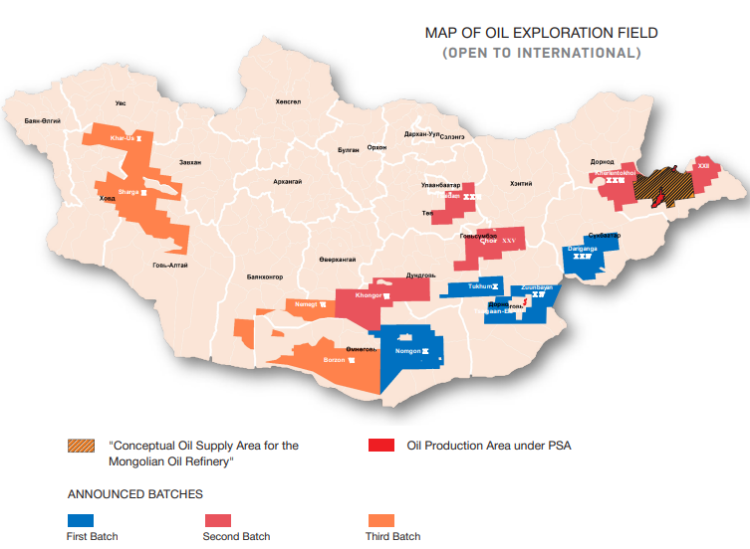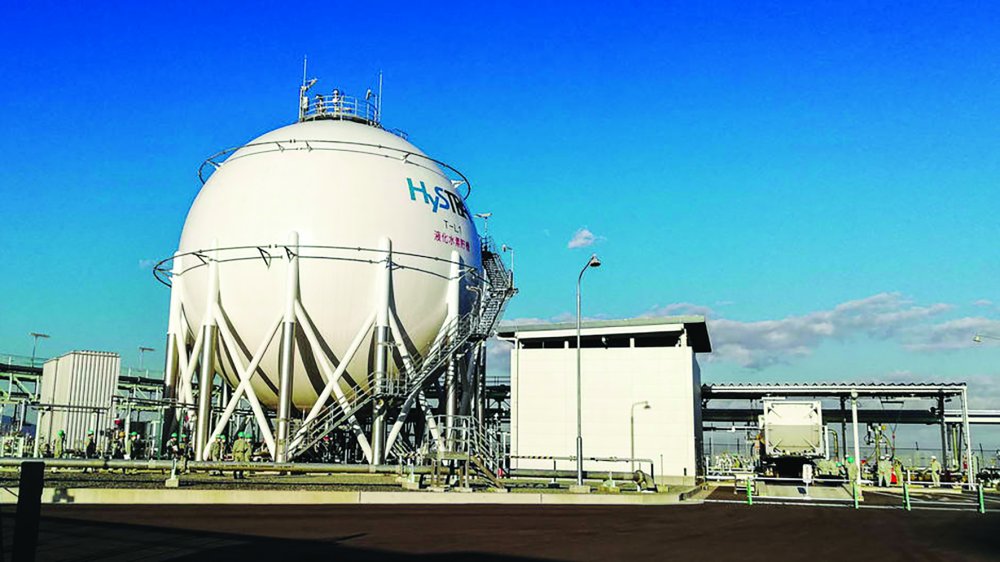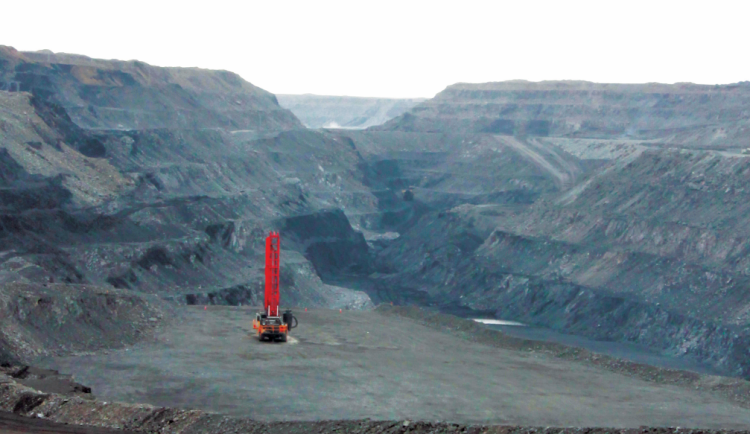 Elixir Energy Limited, an ASX-listed (ASX: EXR) gas exploration and development company, commenced a green hydrogen pilot project named “Gobi H2” earlier this year in the Gobi region of Mongolia. In light of the Mongolian Government’s plan to study green hydrogen technology, we interviewed Mr. Neil Young, Managing Director and Chief Executive Officer at Elixir Energy Limited.
Elixir Energy Limited, an ASX-listed (ASX: EXR) gas exploration and development company, commenced a green hydrogen pilot project named “Gobi H2” earlier this year in the Gobi region of Mongolia. In light of the Mongolian Government’s plan to study green hydrogen technology, we interviewed Mr. Neil Young, Managing Director and Chief Executive Officer at Elixir Energy Limited.It has been over a month since Elixir Energy Limited started a pilot project on green hydrogen in Mongolia. Can you give us a status update on the project and how you see the future of the hydrogen market?
Green hydrogen is an effective commodity that most international bodies believe has a significant future. It doesn’t have any market just now. So, for the market to develop, it needs policy actions by governments to follow through on their net-zero aspirations. So that can be delivered in numerous different ways from carbon taxes to trading schemes to mandating particular products not to be used. But until those things happen, there isn’t a market. But the most incredible bodies think those will happen.
So we are trying to be the first mover in Mongolia, which we think has several significant advantages in supplying the world’s largest energy importer China.
We are undertaking many actions to position ourselves as that leader. Green hydrogen, at the end of the day, is very simple. It uses renewable energy to run an electrolyzer to turn water into its constituent molecules of hydrogen and oxygen. Mongolia has very high-quality renewable resources in the form of wind and solar, and a very good combination of the two based on the analysis that we have done. But probably more significant from Mongolia’s point of view is that its immediate proximity to China provides substantial cost advantages in delivering hydrogen into the Chinese market in the future compared to countries like Australia, Chile, or Namibia, those that are positioned as green hydrogen exporters. And driven by the physics of hydrogen, which is such that the costs of moving hydrogen by boat are very expensive. Therefore, if you are supplying it as an immediate neighbor, by pipeline, or initially by truck, then you have significant cost advantages. And that is the driver of why we picked Mongolia as a location to investigate green hydrogen. So right now, we are doing a pre-feasibility study with an Australian engineering firm that has done similar projects in Australia. We have signed a memorandum of understanding with the Mongolian Ministry of Energy. And we have supplied various materials about what we think is an optimal policy environment for supporting the industry. We already engaged with the Umnugovi province and various soums in terms of our normal business and we recognized that is important for a new business. We will be exploring new sources of water later this year to use as input. We are working with project financiers, such as the international financial institutions based in Mongolia, as well as Mongolian Green Finance Corporation. Ultimately, we need to engage with potential Chinese customers. But that will be quite difficult for now with the Chinese border being effectively closed. But we also have plans for that.
Is there any investment made yet? How are you planning to cover the necessary financing?
We are a company that is listed on the Australian Stock Exchange. We have been exploring Mongolia for natural gas in the form of coal-bed methane. We have the funds to support that. We have deployed some of those funds on various activities that I’ve mentioned. Our long-term view is that a large-scale green hydrogen project will be very capital-intensive in the form of probably an excessive USD 10 billion for a medium-sized project. But our task now is to initiate a pilot project, which will cost tens of millions of USD, rather than billions. That can be financed from our own resources and projects financed from financing bodies, such as the ADB or EBRD, or the MGFC, who are already strongly invested in Mongolia and increasingly have a remit to invest in green developments, rather than more old fashioned fossil fuel developments.
In terms of government policies, the International Energy Agency suggested that governments need to invest more to create the market, production, and demand. Mongolia recently announced a new recovery policy, which includes actions to study green hydrogen. But policies and regulations remain absent. What do you think is crucial for regulations regarding hydrogen?
I think richer countries like Australia are providing a lot of cash support for R&D and things like that for hydrogen. But not every country can afford to do that. What we did in Mongolia recently was commission legal advice in Australia as a foundation and in Mongolia. Specifically to say, “Does Mongolia need to change its laws to allow green hydrogen production?”. And that legal advice concluded, “No, it didn’t. The existing laws allow you to do it.” Sure, laws could improve. Particularly in taxation, where Mongolian laws can be quite adversarial for investors. Otherwise, the most important thing is for governments, as their best role, to set the rules and be the umpire, but not to be a player in the game. I think it’s often tempting in some countries for governments to want to be actual equity participants and industry players and I would strongly resist that in Mongolia. Because I think it would just deter investment from anybody else.
What about challenges in Mongolia? What is the biggest obstruction that you’re facing, especially given that you have experience in methane gas exploration? What do you think will be the difficulties for a hydrogen project?
I suppose a general improvement in the legal environment, tax laws in particular would be welcomed. One thing that we recognized that is important to manage is the community’s views on using water. We know, for example, that OT uses a lot of water, which is just natural for large-scale mining activities. That has occasionally been used as a tool to attack Rio unfairly, in my view. But as we develop, we will start to use water in the Gobi region, which will be much less water than mines, such as OT and ETT. Then the community will need to be educated that it is not taking their water, it is a different source of water. And that the country is fully benefiting economically. But that education process will need to start early and we need to be well aware that water can be used as a tool to attack particular investments.
One of the most important things to educate the community about water usage will be the consumption of hydrogen. As of now, the public does not know what hydrogen is and its usage. How long do you think it will take for the public to start using it as an energy source?
Hydrogen has particular niche uses. But it is certainly not a panacea with multiple uses in the future energy environment. So I don’t think it will ever be a source of heating fuel. I don’t think it will be used in cars to a material extent. I think it can be used in trucks, trains, buses, and longer-haul heavy-duty vehicles. There is a role for that in Mongolia in various ways. But I don’t see how it will ever be used as a heating tool. Our focus is on the much larger export market. And in particular, steel manufacturing, which in our view, is one of the key industries that faces few alternatives if it is to stop using fossil fuels other than hydrogen. So that is our primary focus and there will be other similar nich - es such as cement manufacturing. But otherwise, I think in a smaller economy with a low population as in Mongolia where those particular industrial niches are absent, hydrogen use won’t be widespread. Because there will be other better things like electric vehicles. I am sure that in 10 years, there will be a lot of electric vehicles in Mongolia and that will be a very efficient use of the country’s excellent renewable resources. I think that will be far more economical than, for in - stance, hydrogen cars.
If you compare the global average production cost of coal and green hydrogen, it’s about $0.016 per kilogram for coal. As you already know, hydrogen produces four times greater en - ergy compared to coal, but even still, the equal amount of energy output costs 4 times higher than coal. In your studies, how costly was the production of green hydrogen in Mongolia?
That is a very dynamic figure. Because it depends on the cost of producing renewable energy. Those costs have come down a lot in recent decades and most credible observers think the costs will contin - ue to reduce. The second key under the cost is the cost of electrolyzers, and again, many people believe that those will reduce. But as you rightfully point out, coking coal for steel is substantially cheaper than us - ing green hydrogen for steel. But that takes me back to my earlier point.
If governments are serious about what they have promised on a net-zero outcome, coal will not be available. So it is not a question of comparing hydrogen to coal.
It is a question of what other alternatives are there and what they cost. So I think that is the true comparison that one needs to make.
When do you think your project will be profit - able? Because as you’ve said, the market isn’t available. Although governments have net-ze - ro targets, the production cost is still too high. When do you think your projects will be more efficient and viable?
The first thing to notice is that there is an enormous amount of investment occurring inside the People’s Republic of China as we speak into various forms of hydrogen, including green hydrogen. That, I think, demonstrates that the Chinese government is genu - inely moving towards its net-zero target albeit in many decades to come if they continue to do that, which as I’ve said, we have to. Then a light-scale green hydro - gen project will become profitable for two decades to come. But I can’t be more precise than that. I think the point of the pilot project I mentioned isn’t really to make money in the short term. It is rather to confirm viability for the long term to the key stakeholders, who are the customers of financiers that this thing can work in this particular location. So I think prof - itability is probably way away. But you have to work now to position yourselves to be the leader in terms of accessing that profitability in the future.
You’ve mentioned that one of the biggest fac - tors in the overall production cost is electrolyz - er. Australia is one of the leading countries in terms of electrolyzer development. I’ve heard about this recent research that can greatly re - duce electrolyzer cost and it claims to have 98 percent system efficiency. Can you give me an example of how costly they are for your project and what is their system efficiency?
The project you’ve mentioned is a good one and at a fairly early stage. The electrolyzing competition is really between Europe, like Siemens in Germany, and China. China is probably the leader for now. And the nature of China’s industrial capabilities over the last few decades leads me to suspect that they will prob - ably be the winner in the mass production of elec - trolyzers. Countries like Australia will hopefully win in niches and in particular, IP developments. But I think, in terms of bulk production, China will win. Currently, it’s about a million dollars of mega war cost for elec - trolyzers. Hopefully, that can come down. If we think about the total cost of producing green hydrogen ex - port plants, energy amounts to two-thirds of the total cost, while electrolyzers make up one-third of it. So given that the larger saving potential is in reducing renewable energy costs, and that is ex-plant costs, once you’ve added delivery costs, including by boat, then that’s where you’ll look for savings. And that’s where laws of physics make savings hard to achieve. Because liquifying hydrogen is intrinsically very expensive to do.
Lastly, Mongolia has significantly high sources of coal. The country may decide to use brown hydrogen, instead of green. Cost-wise, it will be a great competitor. How do you see the market in the future?
I think there is no point in using brown hydrogen be - cause it doesn’t deliver any climate benefits unless you can capture the CO2 emitted in the conversion process and find underground reservoirs to store it in. Typically, those reservoirs only exist in countries that had a large scale of oil and gas production and Mongolia hasn’t. It had small-scale oil production and reservoirs are probably not suitable for storing CO2. So I don’t think that carbon capture from using coal to make hydrogen makes sense in that country and many others. Absent that, there is just no point in making gray hydrogen. You are just increasing pollution while reducing it.






















